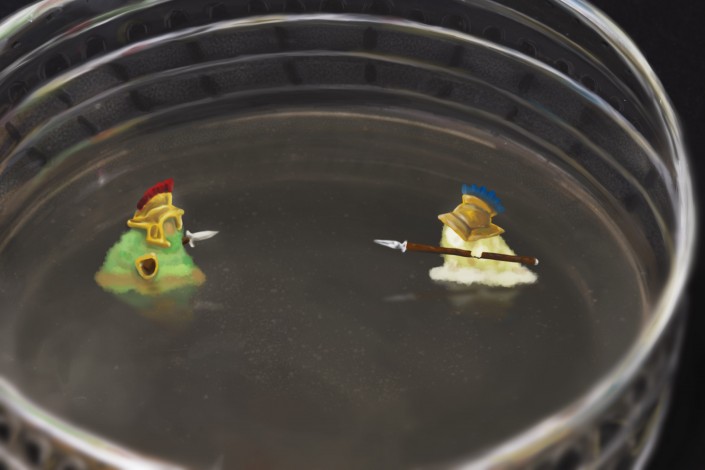Of micro combat: Study looks at how bacteria wage war, resist occupation

Image: Academic Affairs Communications, Research Communications and Public Relations
Two types of bacteria found in the soil have enabled scientists at Texas A&M AgriLife Research to get the dirt on how resistance to antibiotics develops along with a separate survival strategy.
The study, published in the journal PLoS Genetics this month, identifies an atypical antibiotic molecule and the way in which the resistance to that molecule arises, including the identity of the genes that are responsible, according to Paul Straight, an AgriLife Research biochemist.
Straight and doctoral student Reed Stubbendieck observed a species of bacteria changing its appearance and moving away from a drug to avoid being killed.
“We wanted to know what happens when we put two bacterial species together to compete with each other and use that model as a way to identify new molecules, identify pathways, or gene functions, that are required for the bacteria to survive under competitive stress,” Straight said. “Identification of interesting new molecules or bacterial mechanisms of control that one might exploit can lead to developing a new antibiotic.”
For this study, Stubbendieck put together two species of non-pathogenic, soil-borne bacteria, Streptomyces and Bacillus subtilis, in different ways in the laboratory. He monitored the bacteria for different patterns in growth, motility and other factors when the organisms were together as opposed to when they were separate.
Stubbendieck noticed that the two bacteria would grow as expected in each colony initially, but over time one of the bacteria colonies would start to destroy the other one.
He also noted that in the region where the cells were destroyed, there developed “little teeny colonies of bacteria” growing, indicating that they’re resistant to the molecule. So he picked a number of those colonies and sequenced the genomes, which found the mutations that cause resistance.
“I put a bunch of the cells with mutant bacterial stains on a petri dish together, and when I came in the next morning and looked in the incubator, I saw a difference between the mutants and the non-mutant strain that was night and day, and we knew we are on to something,” Stubbendieck said.
“With two pieces of the puzzle — the molecule itself identified plus a way in which the resistance to that molecule would arise, including the identity of the genes that are responsible for resistance — Reed was able to dissect the pathway of resistance,” Straight said. “And it turns out that in a B. subtilis membrane, proteins work as signaling systems for lots of different things. They can receive signals from the external environment, signals from other bacteria, signals telling them about the status of their cell in a fluctuating environment.
“If something damages a membrane, bacteria have a way of sensing that and then turning on the response,” Straight said.

